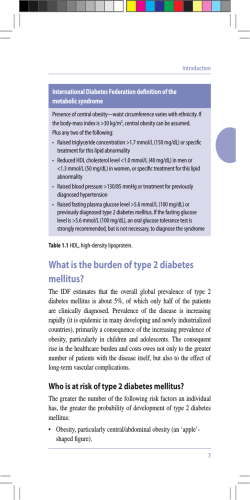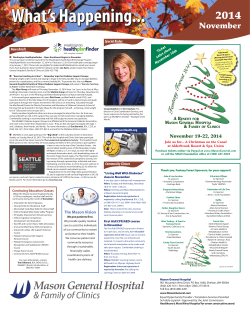
GDM - Queensland Health
Recommendations for the diagnosis of Gestational Diabetes Mellitus (GDM) Effective Date Audience Endorsement Prepared by By 1 January 2015 Private and public clinicians caring for maternity patients in Queensland Recommendations endorsed in October 2014 by: • Statewide Maternity and Neonatal Clinical Network • Statewide Diabetes Clinical Network • Queensland Clinical Guidelines Statewide Diabetes Clinical Network – GDM reference group Queensland Clinical Guidelines Key recommendations As of 1 January 2015 the diagnosis of GDM is to be based only on an oral glucose tolerance test (75g carbohydrate load). There has also been a change to the threshold for diagnosis of GDM. This is in line with recommendations from the International Association of Diabetes in Pregnancy Study Groups (IADPSG) and the World Health Organisation (WHO) and is endorsed by the Royal Australian and New Zealand College of Obstetricians and Gynaecologists (RANZCOG). Aspect Diagnostic testing All women High risk women Women having maternal steroids Diagnostic threshold for GDM Diabetes in pregnancy Version 1.3 Recommendation • Diagnosis of GDM is based solely upon an oral glucose tolerance test (75 g carbohydrate load) • The two step Glucose Challenge Test (GCT) followed by an Oral Glucose Tolerance Test (OGTT) will no longer be performed • The GCT will not be available for GDM diagnosis (do not order this test) • Require a two hour OGTT (after overnight fasting) • Should maintain a normal diet until 10 hours before the OGTT and then fast • During fasting, advise the woman to drink water to prevent dehydration and to continue any usual medications • The three day high carbohydrate diet is no longer required • Perform an additional early OGTT with first antenatal bloods or at the first antenatal visit (as early as possible) • If normal, repeat at 24-28 weeks • Do not perform an OGTT within one week of maternal steroids (betamethasone/dexamethasone) administration • Monitor blood glucose levels if the woman is receiving steroids • Diagnosis of GDM is based on: o Fasting glucose greater than or equal to 5.1 mmol/L and/or o 1-hour glucose greater than or equal to 10.0 mmol/L and/or o 2-hour glucose greater than or equal to 8.5 mmol/L • If a fasting glucose test has been performed for other reasons and shows an elevated value, this may be accepted as diagnostic of GDM • Women with markedly elevated values may be classified as having Diabetes in Pregnancy o Fasting glucose greater than or equal to 7.0 mmol/L (OGTT or fasting plasma glucose) and/or o 2-hour glucose greater than or equal to11.1 mmol/L (OGTT) • Women with diabetes in pregnancy: o Require urgent care o May have undiagnosed “overt” diabetes and associated complications such as retinopathy and nephropathy o Are at higher risk of pregnancy complications o Manage in a centre/clinic with experience in the management of pre-existing diabetes in pregnancy o May require confirmation of diagnosis in the postpartum period Page 1 of 3 Flow chart for Gestational Diabetes Mellitus Risk factors (circle all that apply) Score • BMI: (pre-pregnancy or first antenatal visit) 25 - 35 kg/m2 > 35 kg/m2 1 2 • Ethnicity: Asian, Indian subcontinent, Aboriginal, Torres Strait Islander, Pacific Islander, Maori, Middle Eastern, non-white African • Previous GDM • Previous elevated blood glucose • Maternal age ≥ 40 years • Family history DM: (1st degree relative with diabetes) or sister with GDM • Previous macrosomia: (birth weight > 4500 g or > 90th percentile) • Previous perinatal loss • Polycystic Ovarian Syndrome • Medications: (corticosteriods, antipsychotics) Total score (≥ 2 = High risk) Assess all women for high risk factors No Risk factor score ≥ 2? 1 2 2 2 2 2 2 2 2 Yes Order 2 hour 75 g OGTT with first antenatal bloods or at first visit Order 2 hour 75 g OGTT at 24-28 weeks gestational age Advise women to: • Fast (except for water) for 10 hours prior to OGTT • Take usual medications Normal Normal Result Results are: • Fasting < 5.1 mmol/L • 1 hour < 10 mmol/L • 2 hour < 8.5 mmol/L No Is this the 24-28 wk OGTT? Review OGTT result GDM GDM One or more of: • Fasting ≥ 5.1 mmol/L • 1 hour ≥ 10 mmol/L • 2 hour ≥ 8.5 mmol/L Refer for GDM care as per local protocol Yes Routine antenatal care Version 1.3 BMI: Body Mass Index DM: Diabetes Mellitus GDM: Gestational Diabetes Mellitus OGTT: Oral glucose tolerance test ≥: greater than or equal to <: less than >: greater than Page 2 of 3 Supporting information Aspect Rationale Further information Acknowledgements Acronyms Version 1.3 • The OGTT has been recommended instead of the GCT because: o Up to 25% of GDM is missed by the two-step process o Diagnosis and therapy of GDM is delayed by the two-step process, sometimes beyond 30 weeks’ due to delays in arranging and performing the second test o Some women do not ever get to do the second test when indicated o Health services will be able to accurately determine the incidence of GDM • Report of a World Health Organization Consultation. Diagnostic criteria and classification of hyperglycaemia first detected in pregnancy: a World Health Organization Guideline. Diabetes Research and Clinical Practice 2014; 103 (3): 341-63 • IADPSG Consensus Panel International association of diabetes and pregnancy study groups recommendations on the diagnosis and classification of hyperglycemia in pregnancy. Diabetes Care 2010; 33:676682 • RANZCOG recommendations for GDM diagnosis • Australasian Diabetes in Pregnancy Society (ADIPS) • Queensland Clinical Guidelines • Professor Chis Nolan and Australian Capital Territory Diabetes in Pregnancy Service • Statewide Maternity and Neonatal Clinical Network (QLD) • Statewide Diabetes Clinical Network • Queensland Clinical Guidelines • Statewide Rural and Remote Clinical Network • Gestational Diabetes reference group – Statewide Diabetes Clinical Network GDM: Gestational Diabetes Mellitus OGTT Oral glucose tolerance test GCT Glucose challenge test RANZCOG Royal Australian and New Zealand College of Obstetricians and Gynaecologists WHO World Health Organisation IADPSG International Association of Diabetes in Pregnancy Study Groups Page 3 of 3
© Copyright 2026











